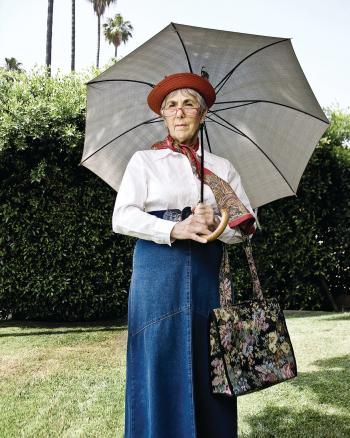Halloween is my favorite holiday. When I taught English to immigrant children in Pacoima, California, October was the month for masks and skeletons to teach the parts of the body. Creating costumes was also the perfect activity for teaching the English words for different types of clothing.
I made sure every child had a costume. I collected ballet tutus and Superman capes from friends whose children had outgrown them. My student Maria Elena was thrilled to be the one to fit into the Cinderella dress with layers of pink net, shiny sequins and a velvet cape. Maria loved me. She was a fourth grader from Zacatecas, Mexico. She stayed after school to help me clean the room. She loved books, especially familiar fairy tales, and she would sound out the English words and help me with my Spanish.

Maria Elena didn’t have a lot of friends in the classroom. She had a hot temper, cried easily and was very possessive of me. Fourth graders are like that. She wanted to sit next to me in the auditorium. She wanted to hold my hand when we did circle games or dances. She even wrote me little love messages in Spanish with hearts and flowers.
Every afternoon, Maria Elena begged to know what my costume was going to be. I told her it was a surprise. Two days before Halloween, I asked the children to draw a picture of what they thought I would wear. Some drew me in a pretty dress, like Snow White. Some of the boys drew me looking like Wonder Woman. Maria Elena drew me as an angel with a halo.
The day finally arrived. The fourth graders lined up with their Dracula makeup and monster masks. There were two Spider-Men and several princesses in 99¢ Only Store tiaras and mother’s makeup. I appeared in a high-necked blouse, a long skirt, lace-up boots and a silly hat with a feather. I also carried an umbrella that made me look as if I had just flown in. “Mary Poppins!” they screamed.
At 1 p.m., we made our way to the playground. Scary Halloween music blared from record player speakers. My students took their assigned places and the parade began. The principal came out with the office and cafeteria staff to judge the scariest, prettiest and most original costumes.
The children paraded around the yard three times while the principal consulted with the other judges. Finally, the judges found the winning costume wearers and led them to the microphone to get ribbons. There was Maria Elena glowing as she was awarded the Most Beautiful Costume award. I took pictures of her.
We went back to our classroom for cupcakes and apple juice. It was almost time for dismissal. Maria asked if she could take the costume home and wear it that night for trick-or-treat. “Of course,” I answered, walking the class to the school gate. When all the children had dispersed she followed me back to the classroom.
Maria Elena wanted to do something nice for me at Christmas or my saint’s day, “When is it?” she asked.
I looked down at her and answered in Spanish, “No celebro el día de los santos.”
“¿Por qué?” she asked.
“Porque soy judea.” I am Jewish.
The child recoiled as if I were suddenly transformed from Mary Poppins to a cruel, monstrous beast. I inadvertently touched my head as if I had grown horns.
The pain in Maria Elena’s face was real, and she would not allow me to comfort her. Tears welled in her eyes and in mine, too. The world is a scary place, with ghosts and monsters lurking where we least expect them to be.
Maria Elena’s horror and shock faded gradually. For the next few weeks, she kept a polite distance from me. She didn’t volunteer to stay after school to clean the chalkboards or sharpen pencils, as she had so eagerly done in the past.
It wasn’t until mid-November that she timidly reached for my hand on the playground when the class was lining up. By December she was once again cleaning my desk after school and wanting to help decorate the winter bulletin board with snowmen and pine trees. In class we played Holiday Bingo and identified menorahs, kinaras and luminarias as symbols of the different ways Jews, African Americans and Mexicans celebrate their special days.
The last day of school before the winter break, Maria Elena surprised me. On my desk I found a pair of filigree earrings slightly misshapen and with one purple stone missing. They were wrapped in Kleenex and tied with some borrowed yarn. Taped to the package was a card she had made at home. It read: To my best teacher. Love, Maria Elena
I kept the bent earring with the missing stone in the top drawer of my desk to remind me of Maria Elena and how hard—but important—it is for children to recognize the monsters and devils created by ignorance and old superstitions, and for teachers to help dispel them.
Lila Lee Silvern is a former teacher in California’s San Fernando Valley and a former director of programs designed to help immigrant students.
Share Your Story
What motivates you to get up each and every morning and serve the children in our nation’s schools? We want to hear from you. Send your submission for the “Why I Teach” column to lfjeditor@splcenter.org.
Share Your Story
We want to hear what motivates you to get up each morning and serve students in our nation's schools. Send your 600-word submission for the "Why I Teach" column to us here.